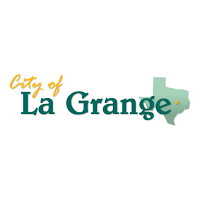Originally published October 7, 2024
The end of September heralded the final bow for my visits to small public libraries in Central Texas, tours of their spaces, and chats about how the Texas State Library and Archives Commission (TSLAC) can best support library leadership. For this last round, Library Digital Opportunity Program Coordinator Henry Stokes accompanied me to Schulenburg Public Library, Fayette Public Library, and Smithville Public Library.
Schulenburg Public Library
Surrounded by many open fields within Fayette County where you can easily spot cattle and wildflowers, the city of Schulenburg is the perfect stopping point during that Jumpin’ Jive from Houston to San Antonio on I-10 or whenever you travel State Highway 77. The city is not only known for its German culture, homemade kolaches, fresh pecans, and Shorthorns but is also home to a Blinn College campus, Painted Churches, the Schulenburg Sausage Fest, the Texas Polka Music Museum, and the Schulenburg Public Library.
Established in 1940, the Schulenburg Public Library is currently located on Bohlmann Street in a home bequeathed to the city in 1975 by Charles and Emma Matula. It provides a wealth of information for research, computer access, large print books, videos, and periodicals in addition to books, which remain the core of its collection. For a detailed account, visit the home page of the library website.
Fayette Public Library
The city of La Grange is in the center of the Texas-German belt, in the midst of a Sweetheart’s Wrap promenade with the Colorado River. This seat of Fayette County is home to the Texas Czech Heritage and Cultural Center, Texas’s oldest functioning meadery Blissful Folly Farm, Camp Lone star, Monument Hill and Kreische Brewery State Historic Site, and the Fayette Public Library, Museum, & Archives.
The library’s history dates back to 1938 and is steeped in wide community support throughout multiple iterations that led to the current two-story building which houses the library on the ground floor and a large state-of-the-art Fayette Heritage Museum and Archives above. For a detailed account, visit the About section of the library website.
Smithville Public Library
The city of Smithville is just off State Highway 71 and ten miles southeast of Bastrop in southeastern Bastrop County. The city has a rich railroad history; is an art destination; has several options for touring; and is home to the James H. Long Railroad Museum, the Guinness World Record Smitty the Gingerbread Man, and the Smithville Public Library.The Smithville library began in 1929 when the members of the Smithville Woman’s Club proposed to establish a public library. Although the original collection had a mere 500 books, the current library holds over 62,000 materials and provides free services to all residents living within the Bastrop county boundaries with services available to all others. For a detailed account, visit the Who We Are & How We Came To Be page on the library website.








Comments
Post a Comment